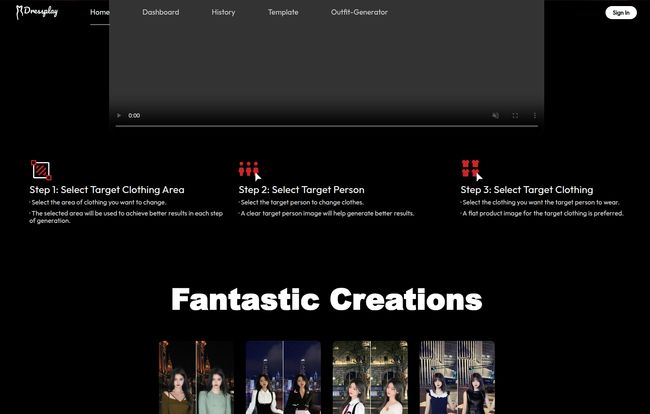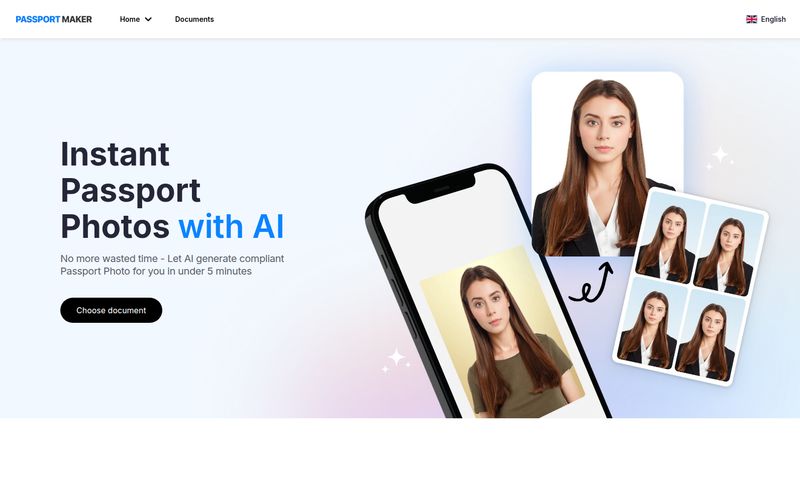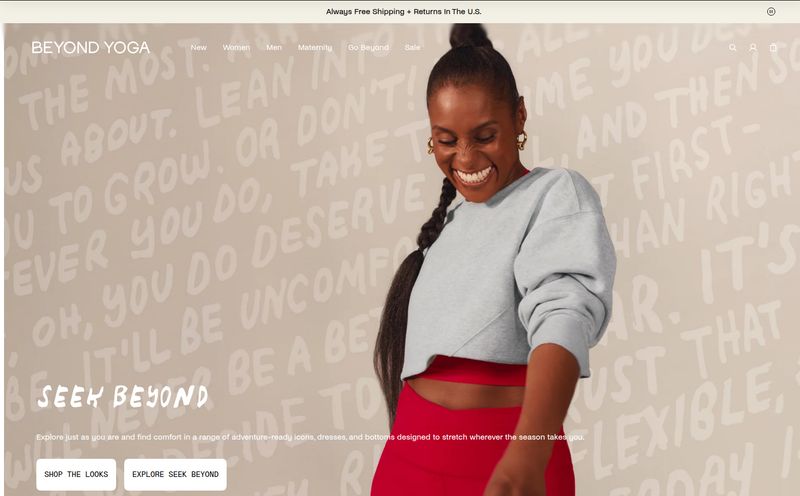We've all been there. You're scrolling through your camera roll, find a killer photo—the lighting is perfect, you're not blinking, it’s a miracle—but you hate your shirt. Or maybe you're a content creator trying to get more mileage out of a photoshoot. The endless cycle of buying new clothes for a few pictures is exhausting and, let's face it, expensive. For years, the only solution was to become a Photoshop wizard or just live with outfit regret.
But the AI wave is crashing over every industry, and fashion is no exception. A whole new category of tools is popping up, promising to be our digital stylists. One that recently landed on my radar is Dressplay.ai, which bills itself as a 'Free AI clothes changer'.
Free? AI? Clothes? Three of my favorite words. As someone who’s spent more years than I’d like to admit analyzing digital trends and traffic generators, I'm naturally skeptical but also incredibly curious. Is this just another gimmicky AI toy, or is it a genuinely useful tool for marketers, creators, and the fashion-curious? I had to find out.
So, What is Dressplay.ai, Really?
At its core, Dressplay.ai is a web-based platform that uses artificial intelligence to change the clothes on people in photographs. Think of it like a hyper-specific version of Photoshop's Generative Fill, but built specifically for apparel. You give it a photo of a person and a photo of a piece of clothing, and it mashes them together to create a new image. It's the digital equivalent of playing with paper dolls, but with your own pictures.
The whole idea is to make virtual try-ons and digital styling accessible to everyone, not just big brands with massive R&D budgets. No complex software, no steep learning curve. Just upload, select, and generate. At least, that's the promise.
How It Works: A Simple Three-Step Dance
The homepage keeps things incredibly simple, breaking down the process into three steps. I appreciate this directness; there's no marketing fluff, just a clear path to getting started.
Here’s the breakdown based on their guide:
- Select Target Clothing Area. First, you upload your photo and basically draw a mask over the clothing you want to replace. The site notes that a more accurate selection leads to better results, which is standard practice for any kind of image manipulation. Pro tip from my own experience with similar tools: use a photo where the clothing has clear, defined edges. A blurry photo taken in a dark room is just asking for a chaotic, six-sleeved sweater result.
- Select Target Person. Next, you tell the AI which person in the photo is getting the makeover. This implies it might be able to handle group shots, though I'd bet it works best with a single, clear subject. Again, clarity is your friend.
- Select Target Clothing. This is the fun part. You provide an image of the new clothing item. Dressplay.ai suggests that a “flat product image” is preferred. Think of those clean, front-facing shots you see on an e-commerce store. This gives the AI the best possible data to work with, helping it understand the texture, shape, and design it needs to 'drape' onto your person.

Visit Dressplay.ai
My First Impressions and a Few Test Runs
Okay, theory is great, but how does it perform in the wild? I grabbed a few photos and gave it a whirl. The user interface is clean, a sleek dark mode that’s easy on the eyes. It feels modern and un-intimidating. I decided to test it with a picture of me from a networking event – good lighting, but a boring blue polo shirt.
I selected a cool, graphic-printed jacket from a random online store as my target clothing. The process was as straightforward as advertised. A few moments of processing, and… the result was pretty impressive! It wasn't perfect, mind you. One of the edges near the collar was a little bit fuzzy, a classic AI tell. But the way it handled the shadows and the slight turn of my body was much better than I expected for a free tool. It looked plausible. Believable, even. I tried another one, swapping a t-shirt for a formal button-down. This time, the AI struggled a little with the crispness of the collar, making it look slightly soft. This brings up one of the tool's acknowledged limitations: the quality can vary. It's a bit of a creative lottery, which is part of the fun.
This is where I see the immediate potential. For a social media manager wanting to mock up a quick lifestyle shot or an indie brand wanting to showcase a new t-shirt design on different models without an expensive photoshoot, this is a game-changer. It’s a tool for rapid visualization.
The Big Question Mark: Pricing and Features
The website and its introduction proudly state that it's free. In the world of AI, 'free' usually comes with a silent asterisk. Is it a limited beta? Ad-supported? A way to gather training data for a more powerful, paid model down the line? It's hard to say. When I went looking for a pricing page or a more detailed FAQ, I was met with a classic 'Not Found' error page. A bit of a dead end, but also kind of charming. It tells me this is likely a new project, still under active development, maybe a passion project from a small team at InnovaGenAI Inc.
This lack of info also applies to some of the more advanced-sounding features mentioned, like the 'Outfit Generator' and 'Template' tabs. I can only speculate that the Outfit Generator might let you use text prompts (e.g., “a red silk blouse”) and the Templates might offer pre-packaged styles like 'business casual' or 'bohemian'. The potential here is huge, and I’m genuinely excited to see how they flesh these out.
Who Is Dressplay.ai Actually For?
While anyone can have fun with it, I see a few key groups who could really benefit from a tool like Dressplay.ai, even in its current state.
Small E-comm and Dropshipping Stores: Imagine being able to take one model photo and instantly turn it into ten, showcasing your entire new line of t-shirts. It's a massive time and money saver for creating product mockups and marketing assets. You can test which designs resonate with your audience on social media before even placing a big inventory order.
Social Media Influencers and Content Creators: The pressure to constantly have new outfits is immense. Dressplay.ai could be a fantastic tool for creating visual variety in your feed. You can virtually 'collaborate' with brands or just experiment with new styles without ever touching your credit card.
The Fashion-Curious Individual: This one’s simple. It’s fun! See what you'd look like with a completely different aesthetic. Settle a debate with a friend about whether you could pull off a leather jacket. It's a low-stakes way to explore your personal style.
The Good, The Not-So-Good, and The AI Weirdness
So let’s wrap this up. No tool is perfect, especially not a free one in a cutting-edge field. The upside is obvious: it's free and accessible. The barrier to entry is practically zero. For what it costs (nothing), the quality is often surprisingly good and it can be a powerful tool for quick visualizations.
On the flip side, the results can be inconsistent. You will get some weirdness, some blurry edges, and some outputs that just don't work. You are at the mercy of your source images—garbage in, garbage out. The other drawback for me, as a professional, is the current lack of documentation. The 'Not Found' page and the mystery around the advanced features make it feel more like a cool experiment than a polished, reliable service right now. But that's okay, not every thing needs to be an enterprise-ready solution.
Frequently Asked Questions About Dressplay.ai
- Is Dressplay.ai really free to use?
- As of late 2024, yes. The site promotes itself as a free tool. There are no visible pricing plans or subscription models, though this could change as the platform develops.
- What kind of photos work best with Dressplay.ai?
- Clear, well-lit photos with a single subject work best. For the clothing you want to add, use a flat, front-facing product shot (like from an online store) for the most accurate results.
- Can I use the images for commercial purposes?
- This is a grey area. Since there are no terms of service available (that I could find), it's unclear. For personal fun and internal mockups, you're likely fine. For public-facing commercial ads, I'd be cautious until they provide clear guidelines. You also have to consider the copyright of the clothing image you're using.
- How does this compare to Photoshop Generative Fill?
- Photoshop is a much more powerful, all-purpose tool that requires a paid subscription and more skill. Dressplay.ai is highly specialized for one task: changing clothes. It's faster and easier for that specific purpose, but lacks the overall flexibility of Photoshop.
- Do I need any special skills to use Dressplay.ai?
- Not at all. If you can upload a photo and click your mouse, you have all the skills you need. It’s designed to be extremely user-friendly.
Final Thoughts: A Fun Peek into Fashion's Future
So, is Dressplay.ai going to put stylists and fashion photographers out of business? No, not even close. But that's not its goal. It's a fun, fascinating, and potentially very useful tool that democratizes a small slice of fashion tech. It lowers the bar for creativity, allowing anyone to experiment with style in a way that was impossible just a few years ago.
Despite the occasional wonky result and the slight air of mystery surrounding its long-term plans, I'm optimistic. It's a fantastic starting point. It’s a tool I’ll be keeping an eye on, and for the price of a few minutes of your time, it’s absolutely worth playing with. You might create something brilliant, you might create something bizarre, but you'll definitely get a glimpse of a very interesting future.



